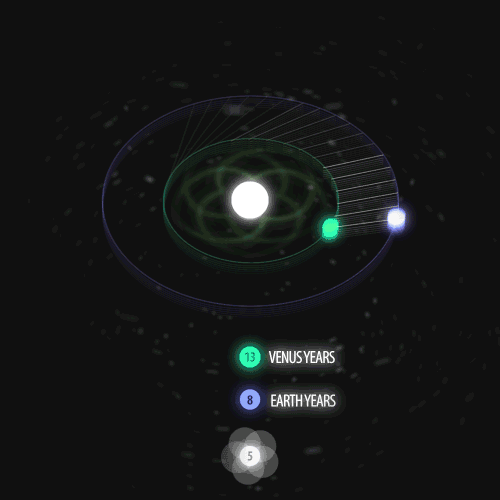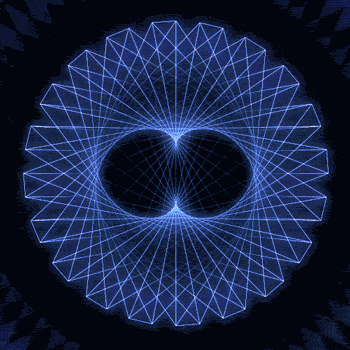What Are The Most Important Skills An Astronaut Should Have M?
What are the most important skills an astronaut should have m?
First of all, the basic requirement is a bachelor’s degree in a STEM field, and 3 years of experience (which can also be substituted for by an advanced degree). Other than that, operational experience (things with a technical/active/hands on nature like flying airplanes, SCUBA diving, taking things apart and putting them back together, basic fix-it skills, etc. etc.) is very important, as this is an integral aspect of every day of a space mission. What we call “expeditionary skills” are also essential, basically the types of things you try to instill in your children, like how to play nicely with others, self care, team care, etc. I like to think about this on the lines of a camping trip and who you would like to have along with you …someone that is competent and can take good care of themselves and their equipment, someone that contributes to the team and helps with group tasks, someone that is good natured and pleasant to be around, etc., someone fun! These things are increasingly important now that we are regularly doing long duration missions (typical International Space Station mission is 6 months). Experience living in extreme/remote/isolated environments with small teams is also useful, as it is similar to what we experience as astronauts.
More Posts from Fillthevoid-with-space and Others
I’m thinking of how to structure this whole podcast dealie so it’s more interactive, and what I’ve come up with is presenting a choice at the end of each episode of what people want to hear about next. Like a choose-your-own-adventure, except the adventure is me doing more research on a topic that I mentioned in the current podcast. I will retain veto power because there are some things I DEFINITELY want to cover, but it would be a cool way to see what other people are interested in with regards to space, to history, to technology, or to people!
Shooting for an April first post date! I just started researching and hooboy, I am going to go way way way way down the rabbit hole of tangents. I think everything is interesting and cool.

After over a century of observations and several theories, scientists may have finally nailed the origin of the high-speed plasma blasting through the Sun’s atmosphere several times a day. Using a state-of-the-art computer simulation, researchers have developed a detailed model of these plasma jets, called spicules.
The new findings answer some of the bigger questions in solar physics, including how these plasma jets form and why the Sun’s outer atmosphere is far hotter than the surface.
“This is the first model that has been able to reproduce all the features observed in spicules,” Juan Martinez-Sykora, lead author and astrophysicist at the Bay Area Environmental Research Institute in California, told ScienceAlert.
Continue Reading.
pretty space words
aphelion - the point in the orbit of a planet, asteroid, or comet at which it is farthest from the Sun. astral - relating to or resembling the stars. caldera - a large volcanic crater, especially one formed by a major eruption leading to the collapse of the mouth of the volcano. celestial - positioned in or relating to the sky, or outer space as observed in astronomy. constellation - a group of stars forming a recognizable pattern. cosmos - the universe seen as a well-ordered whole. equinox - the time or date at which the sun crosses the celestial equator, when day and night are of equal length. faculae - bright patches that are visible on the Sun’s surface. lunation - the interval of a complete lunar cycle, between one new Moon and the next. interstellar - occurring or situated between stars. nebula - a cloud of gas and dust in outer space, visible in the night sky either as an indistinct bright patch or as a dark silhouette against other luminous matter. perihelion - the point in the orbit of a planet, asteroid, or comet at which it is closest to the Sun. synodic - relating to or involving the conjunction of stars, planets, or other celestial objects.
I mention New Horizons in today’s podcast but here’s some more up-to-date info!
Solar System: Things to Know This Week
Time for a little reconnaissance.

Our New Horizons spacecraft won’t arrive at its next destination in the distant Kuiper Belt—an object known as 2014 MU69—until New Year’s Day 2019, but researchers are already starting to study its environment thanks to a few rare observational opportunities this summer, including one on July 17. This week, we’re sharing 10 things to know about this exciting mission to a vast region of ancient mini-worlds billions of miles away.
1. First, Some Background

New Horizons launched on Jan. 19, 2006. It swung past Jupiter for a gravity boost and scientific studies in February 2007, and conducted a six-month reconnaissance flyby study of Pluto and its moons in summer 2015. The mission culminated with the closest approach to Pluto on July 14, 2015. Now, as part of an extended mission, the New Horizons spacecraft is heading farther into the Kuiper Belt.
2. A Kuiper Belt refresher

The Kuiper Belt is a region full of objects presumed to be remnants from the formation of our solar system some 4.6 billion years ago. It includes dwarf planets such as Pluto and is populated with hundreds of thousands of icy bodies larger than 62 miles (100 km) across and an estimated trillion or more comets. The first Kuiper Belt object was discovered in 1992.
3. That’s Pretty Far

When New Horizons flies by MU69 in 2019, it will be the most distant object ever explored by a spacecraft. This ancient Kuiper Belt object is not well understood because it is faint, small, and very far away, located approximately 4.1 billion miles (6.6 billion km) from Earth.
4. Shadow Play

To study this distant object from Earth, the New Horizons team have used data from the Hubble Space Telescope and the European Space Agency’s Gaia satellite to calculate where MU69 would cast a shadow on Earth’s surface as it passes in front of a star, an event known as an occultation.
5. An International Effort

One occultation occurred on June 3, 2017. More than 50 mission team members and collaborators set up telescopes across South Africa and Argentina, aiming to catch a two-second glimpse of the object’s shadow as it raced across the Earth. Joining in on the occultation observations were NASA’s Hubble Space Telescope and Gaia, a space observatory of the European Space Agency (ESA).
6. Piecing Together the Puzzle

Combined, the pre-positioned mobile telescopes captured more than 100,000 images of the occultation star that can be used to assess the Kuiper Belt object’s environment. While MU69 itself eluded direct detection, the June 3 data provided valuable and surprising insights. “These data show that MU69 might not be as dark or as large as some expected,” said occultation team leader Marc Buie, a New Horizons science team member from Southwest Research Institute in Boulder, Colorado.
7. One Major Missing Piece

Clear detection of MU69 remains elusive. “These [June 3 occultation] results are telling us something really interesting,” said New Horizons Principal Investigator Alan Stern, of the Southwest Research Institute. “The fact that we accomplished the occultation observations from every planned observing site but didn’t detect the object itself likely means that either MU69 is highly reflective and smaller than some expected, or it may be a binary or even a swarm of smaller bodies left from the time when the planets in our solar system formed.”
8. Another Opportunity

On July 10, the SOFIA team positioned its aircraft in the center of the shadow, pointing its powerful 100-inch (2.5-meter) telescope at MU69 when the object passed in front of the background star. The mission team will now analyze that data over the next few weeks, looking in particular for rings or debris around MU69 that might present problems for New Horizons when the spacecraft flies by in 2019. “This was the most challenging occultation observation because MU69 is so small and so distant,” said Kimberly Ennico Smith, SOFIA project scientist.
9. The Latest

On July 17, the Hubble Space Telescope will check for debris around MU69 while team members set up another “fence line” of small mobile telescopes along the predicted ground track of the occultation shadow in southern Argentina.
10. Past to Present

New Horizons has had quite the journey. Check out some of these mission videos for a quick tour of its major accomplishments and what’s next for this impressive spacecraft.
Make sure to follow us on Tumblr for your regular dose of space: http://nasa.tumblr.com





Fibonacci you crazy bastard….
As seen in the solar system (by no ridiculous coincidence), Earth orbits the Sun 8 times in the same period that Venus orbits the Sun 13 times! Drawing a line between Earth & Venus every week results in a spectacular FIVE side symmetry!!
Lets bring up those Fibonacci numbers again: 1, 1, 2, 3, 5, 8, 13, 21, 34..
So if we imagine planets with Fibonacci orbits, do they create Fibonacci symmetries?!
You bet!! Depicted here is a:
2 sided symmetry (5 orbits x 3 orbits)
3 sided symmetry (8 orbits x 5 orbits)
5 sided symmetry (13 orbits x 8 orbits) - like Earth & Venus
8 sided symmetry (21 orbits x 13 orbits)
I wonder if relationships like this exist somewhere in the universe….
Read the Book | Follow | Hi-Res -2- -3- -5- -8-
In Conversation with the Sun: Parker Solar Probe Communications
Our Sun powers life on Earth. It defines our days, nourishes our crops and even fuels our electrical grids. In our pursuit of knowledge about the universe, we’ve learned so much about the Sun, but in many ways we’re still in conversation with it, curious about its mysteries.

Parker Solar Probe will advance this conversation, flying through the Sun’s atmosphere as close as 3.8 million miles from our star’s surface, more than seven times closer to it than any previous spacecraft. If space were a football field, with Earth at one end and the Sun at the other, Parker would be at the four-yard line, just steps away from the Sun! This journey will revolutionize our understanding of the Sun, its surface and solar winds.

Supporting Parker on its journey to the Sun are our communications networks. Three networks, the Near Earth Network, the Space Network and the Deep Space Network, provide our spacecraft with their communications, delivering their data to mission operations centers. Their services ensure that missions like Parker have communications support from launch through the mission.

For Parker’s launch on Aug. 12, the Delta IV Heavy rocket that sent Parker skyward relied on the Space Network. A team at Goddard Space Flight Center’s Networks Integration Center monitored the launch, ensuring that we maintained tracking and communications data between the rocket and the ground. This data is vital, allowing engineers to make certain that Parker stays on the right path towards its orbit around the Sun.

The Space Network’s constellation of Tracking and Data Relay Satellites (TDRS) enabled constant communications coverage for the rocket as Parker made its way out of Earth’s atmosphere. These satellites fly in geosynchronous orbit, circling Earth in step with its rotation, relaying data from spacecraft at lower altitudes to the ground. The network’s three collections of TDRS over the Atlantic, Pacific and Indian oceans provide enough coverage for continuous communications for satellites in low-Earth orbit.

The Near Earth Network’s Launch Communications Segment tracked early stages of Parker’s launch, testing our brand new ground stations’ ability to provide crucial information about the rocket’s initial velocity (speed) and trajectory (path). When fully operational, it will support launches from the Kennedy spaceport, including upcoming Orion missions. The Launch Communications Segment’s three ground stations are located at Kennedy Space Center; Ponce De Leon, Florida; and Bermuda.

When Parker separated from the Delta IV Heavy, the Deep Space Network took over. Antennas up to 230 feet in diameter at ground stations in California, Australia and Spain are supporting Parker for its 24 orbits around the Sun and the seven Venus flybys that gradually shrink its orbit, bringing it closer and closer to the Sun. The Deep Space Network is delivering data to mission operations centers and will continue to do so as long as Parker is operational.
Near the Sun, radio interference and the heat load on the spacecraft’s antenna makes communicating with Parker a challenge that we must plan for. Parker has three distinct communications phases, each corresponding to a different part of its orbit.
When Parker comes closest to the Sun, the spacecraft will emit a beacon tone that tells engineers on the ground about its health and status, but there will be very little opportunity to command the spacecraft and downlink data. High data rate transmission will only occur during a portion of Parker’s orbit, far from the Sun. The rest of the time, Parker will be in cruise mode, taking measurements and being commanded through a low data rate connection with Earth.

Communications infrastructure is vital to any mission. As Parker journeys ever closer to the center of our solar system, each byte of downlinked data will provide new insight into our Sun. It’s a mission that continues a conversation between us and our star that has lasted many millions of years and will continue for many millions more.
For more information about NASA’s mission to touch the Sun: https://www.nasa.gov/content/goddard/parker-solar-probe
For more information about our satellite communications check out: http://nasa.gov/SCaN
Make sure to follow us on Tumblr for your regular dose of space: http://nasa.tumblr.com.


On this date in 1902, Greek archaeologist Valerios Stais sifted through some artifacts from a shipwreck at Antikythera. The wrecked Roman cargo ship was discovered two years earlier, but Stais was the first to notice an intriguing bit of bronze among the treasures. It looked like it might be a gear or wheel. That corroded chunk of metal turned out to be part of the Antikythera Mechanism, an ancient analog astronomical computer.
The Antikythera Mechanism tracked planetary positions, predicted lunar and solar eclipses, and even signaled the next Olympic Games. It was probably also used for mapping and navigation. A dial on the front combines zodiacal and solar calendars, while dials on the back capture celestial cycles. Computer models based on 3-D tomography have revealed more than 30 sophisticated gears, housed in a wooden and bronze case the size of a shoebox.
-
 john-erby liked this · 3 years ago
john-erby liked this · 3 years ago -
 2reputationpegacorns liked this · 4 years ago
2reputationpegacorns liked this · 4 years ago -
 i-c-stars reblogged this · 5 years ago
i-c-stars reblogged this · 5 years ago -
 i-c-stars liked this · 5 years ago
i-c-stars liked this · 5 years ago -
 lostinnwonderlandagain liked this · 5 years ago
lostinnwonderlandagain liked this · 5 years ago -
 cosmofrog liked this · 5 years ago
cosmofrog liked this · 5 years ago -
 prometheuslovechild liked this · 5 years ago
prometheuslovechild liked this · 5 years ago -
 barryalans liked this · 6 years ago
barryalans liked this · 6 years ago -
 discostrega liked this · 7 years ago
discostrega liked this · 7 years ago -
 sufferinginmycalvins liked this · 7 years ago
sufferinginmycalvins liked this · 7 years ago -
 tidalwavesoflove reblogged this · 7 years ago
tidalwavesoflove reblogged this · 7 years ago -
 some-ant liked this · 7 years ago
some-ant liked this · 7 years ago -
 aestheticndanime liked this · 7 years ago
aestheticndanime liked this · 7 years ago -
 infinity-and-luck liked this · 7 years ago
infinity-and-luck liked this · 7 years ago -
 2crac liked this · 7 years ago
2crac liked this · 7 years ago -
 littlemorrison liked this · 7 years ago
littlemorrison liked this · 7 years ago -
 arthemisesnotes reblogged this · 7 years ago
arthemisesnotes reblogged this · 7 years ago -
 arthemisesnotes liked this · 7 years ago
arthemisesnotes liked this · 7 years ago -
 dodge6976 liked this · 7 years ago
dodge6976 liked this · 7 years ago -
 necuratu liked this · 7 years ago
necuratu liked this · 7 years ago -
 electricmoonbeam liked this · 7 years ago
electricmoonbeam liked this · 7 years ago -
 caseuoiseau reblogged this · 7 years ago
caseuoiseau reblogged this · 7 years ago -
 heysystole reblogged this · 7 years ago
heysystole reblogged this · 7 years ago -
 liebergottschlagmichtot liked this · 7 years ago
liebergottschlagmichtot liked this · 7 years ago -
 boysandfreewifi liked this · 8 years ago
boysandfreewifi liked this · 8 years ago -
 nosoyunpulpo reblogged this · 8 years ago
nosoyunpulpo reblogged this · 8 years ago -
 nosoyunpulpo liked this · 8 years ago
nosoyunpulpo liked this · 8 years ago -
 solonglondonnn liked this · 8 years ago
solonglondonnn liked this · 8 years ago -
 yellowandscarlet reblogged this · 8 years ago
yellowandscarlet reblogged this · 8 years ago -
 yellowandscarlet liked this · 8 years ago
yellowandscarlet liked this · 8 years ago -
 im-drowning-in-tears liked this · 8 years ago
im-drowning-in-tears liked this · 8 years ago -
 jyeongcifer-blog liked this · 8 years ago
jyeongcifer-blog liked this · 8 years ago
A podcast project to fill the space in my heart and my time that used to be filled with academic research. In 2018, that space gets filled with... MORE SPACE! Cheerfully researched, painstakingly edited, informal as hell, definitely worth everyone's time.
243 posts

![Andromeda [x]](https://64.media.tumblr.com/bc1f14b027b4d1ea42d4b64572cceae3/tumblr_okznz4PWsz1tuy5mao1_500.jpg)